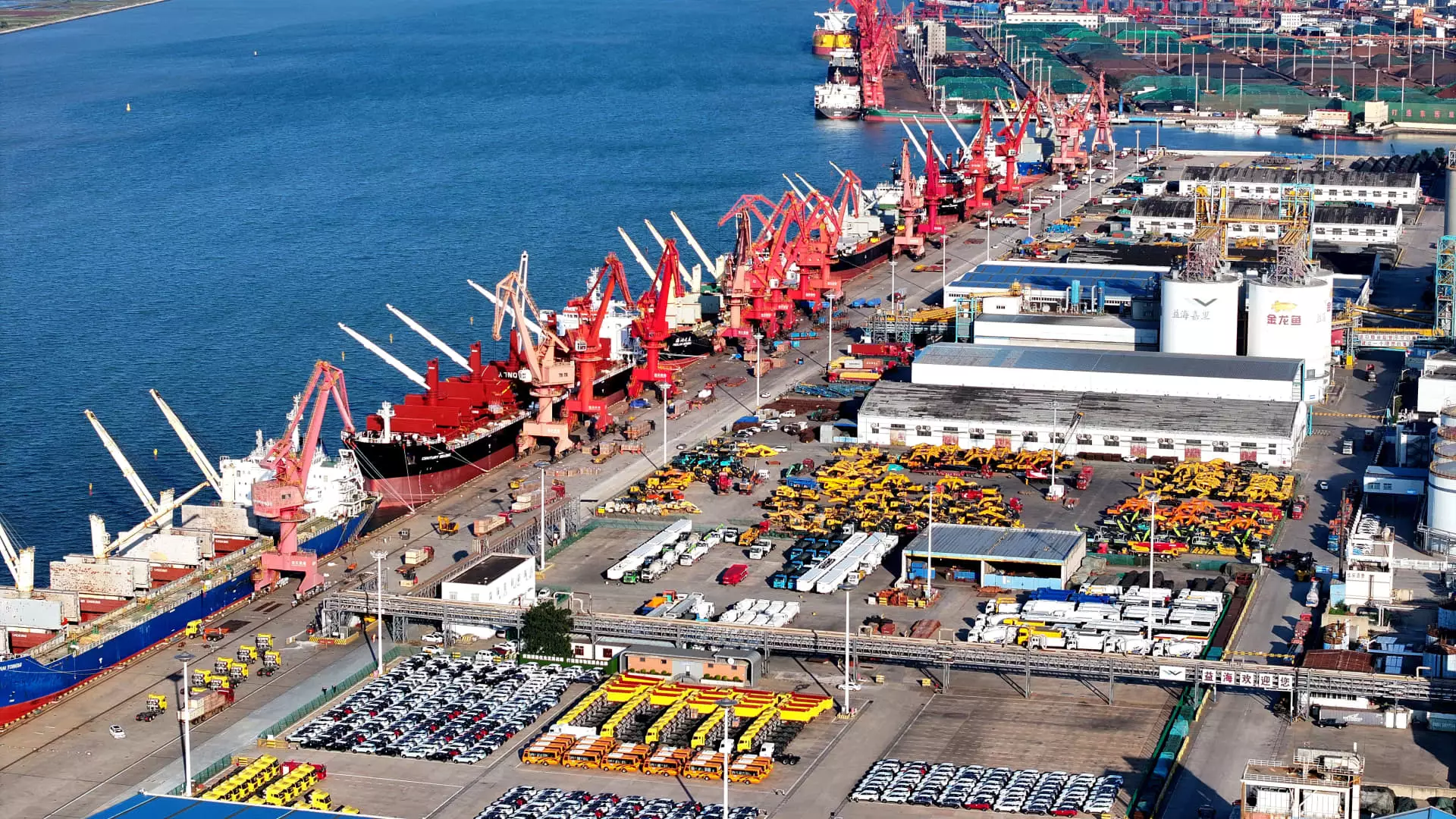In a troubling continuation of economic setbacks, China’s industrial profits witnessed a significant decline of 10% in October compared to the previous year. This downturn marks the third consecutive month of profitability decreases, following a staggering 27.1% drop in September—the most pronounced decline since March 2020. The downward trend in industrial profits serves as a critical indicator of the financial health within China’s manufacturing, mining, and utility sectors. Compiling data from the first ten months of the year, the National Bureau of Statistics noted an overall profit decrease of 4.3% compared to the same timeframe last year, a slight worsened situation from the 3.5% decline recorded through September.
Despite the alarming figures, the National Bureau of Statistics pointed to the Chinese government’s stimulus efforts as a possible factor in mitigating some of the declines seen in October. Yu Weining, a statistician at NBS, highlighted improvements in profitability across most industries, emphasizing equipment and high-tech manufacturing sectors, which have benefitted notably from these government initiatives. However, the broader economic atmosphere remains tenuous.
Eugene Hsiao, head of China equity strategy at Macquarie Capital, suggests that although there has been some deceleration in profit decline—indicating gradual stabilization in the Chinese economy—there is still a long way to go. He posits that this stabilization is occurring from a low base and may be sporadically fueled by ‘one-off’ demands. For instance, local exporters scrambled to ship goods to the United States to beat anticipated tariffs, creating a temporary boost in activity.
A more nuanced examination reveals that the corporate landscape varies significantly between state-owned enterprises, private companies, and foreign firms. While state-owned firms experienced an 8.2% profit drop from January to October, private enterprises faced a lesser decline of 1.3%. Interestingly, foreign industrial firms, which encompass investments from Hong Kong, Macao, and Taiwan, reported a modest profit increase of 0.9% during the same period. This distinction hints at the varying impacts of domestic policies and global economic forces on different sectors of the economy.
Despite the minor improvements in certain sectors, more comprehensive economic indicators paint a worrying picture for China. The consumer price index (CPI) recorded a meager 0.3% rise in October from the previous year, the slowest growth since June. On the other hand, the producer price index (PPI) dropped by 2.9%, reflecting that deflation has worsened compared to a previous 2.8% decrease. Such statistics indicate that the hoped-for effects of government stimulus measures have yet to trickle down effectively throughout the economy.
Moreover, industrial production growth rates have lagged behind expectations. The real estate sector, a pivotal driver of China’s economic performance, saw significant declines of 10.3% year-on-year through October, an increase from the 10.1% decline noted in the previous month. In contrast, there was a silver lining in retail sales, which exceeded expectations with a 4.8% year-on-year growth. The unemployment rate also saw a slight improvement, reducing from 5.1% in September to 5%.
As China’s economy continues grappling with a host of challenges—including sluggish consumer demand and ongoing real estate woes—the government has sought to address the downturn through an array of stimulus measures introduced since late September. These efforts aim to restore economic vigor and help achieve an ambitious growth target of “around 5%.”
Looking ahead, the release of the official manufacturing purchasing managers’ index (PMI) for November is highly anticipated. Projections suggest that the PMI will rise slightly to 50.3, up from the previous month’s 50.1, indicating a modest expansion in manufacturing activities. Analysts closely watch these indicators, aware that maintaining levels above 50 is vital for signaling sustained economic growth.
While there are signs of limited optimism amid ongoing economic difficulties, significant structural issues persist within China’s industrial sectors. Only time will reveal the depth of the impact of government interventions and whether they will suffice to steer the nation toward more robust economic health.

